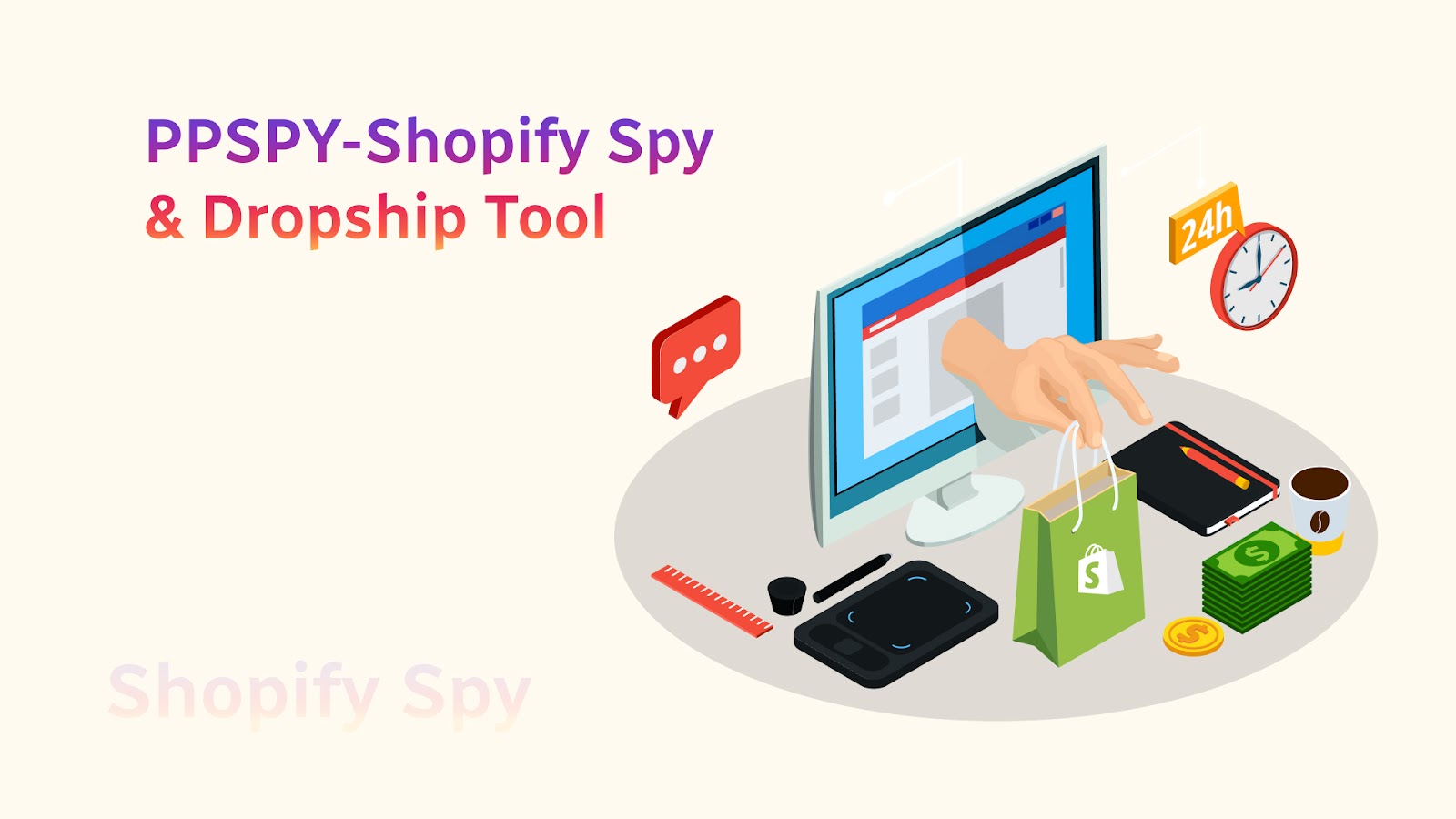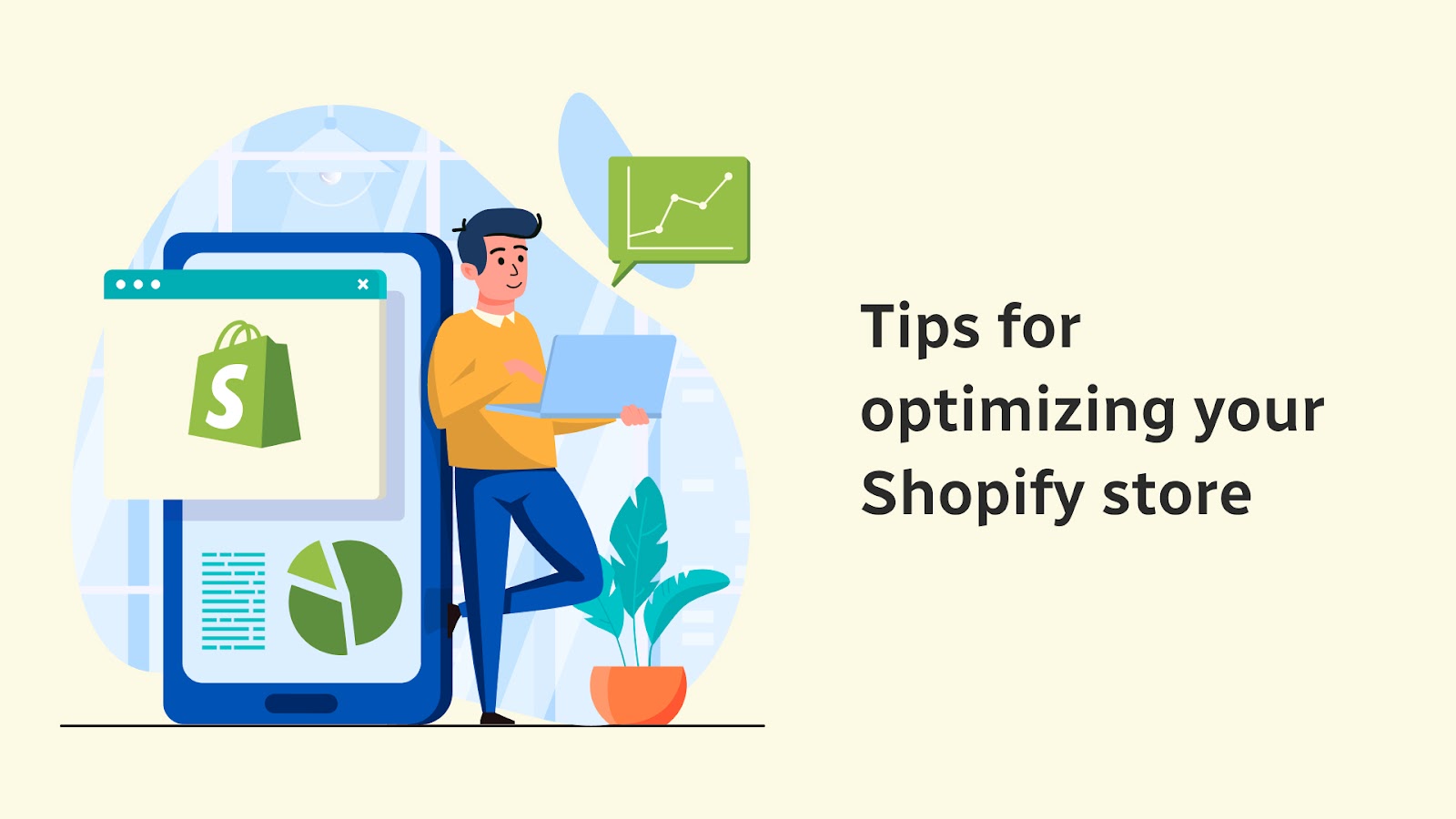Expanding your reach is an essential aspect of growing your Shopify store. To drive more sales, you need to explore new sales channels that can help you reach a wider audience. In this guide, we will discuss various sales channels and how they can be leveraged to increase your store’s revenue.
Whether you’re a small business owner or a large enterprise, expanding your reach through different sales channels is crucial to your success. By tapping into new sales channels, you can increase your customer base and generate more revenue.
We’ll discuss various sales channels, such as marketplaces, social media platforms, and affiliate programs, and how to use them effectively. We’ll also cover tips for optimizing your product listings, managing inventory, and streamlining order fulfillment.
So if you’re ready to expand your reach and drive more sales for your Shopify store, let’s dive in!
Importance of sales channels in expanding your Shopify store’s reach.
Expanding your Shopify store’s reach through different sales channels is important because it helps you reach a wider audience that you may not have been able to reach through your primary sales channel alone.
For instance, marketplaces like Amazon, eBay, and Etsy have millions of customers that actively search for products to buy. By listing your products on these marketplaces, you can tap into a massive customer base and increase your sales potential.
Social media platforms like Facebook, Instagram, and Pinterest also offer opportunities to reach a new audience. You can leverage these platforms by creating engaging content, running targeted ads, and linking your Shopify store to your social media accounts.
Affiliate programs are another sales channel that can help you expand your reach. You can partner with other businesses or individuals to promote your products and earn a commission on each sale made through their unique referral link.
By using multiple sales channels, you can also diversify your customer base, reducing the risk of losing sales if one channel experiences a disruption or becomes less effective. Additionally, each channel has its unique set of features, such as built-in marketing tools or logistics support, that you can use to your advantage.
Importance of having a diverse sales channel strategy to drive sales.
Having a diverse sales channel strategy is crucial to driving sales for your Shopify store. Relying on a single sales channel can limit your reach and potentially stunt your growth.
By using a diverse range of sales channels, you can tap into new markets and audiences, diversify your customer base, and increase your sales potential. For example, if you only sell on your Shopify store, you are limited to reaching customers who are actively searching for your products. But by listing your products on marketplaces like Amazon or eBay, you can reach customers who may not have heard of your brand before.
Moreover, each sales channel has its unique set of features and benefits that you can leverage to optimize your sales. For example, you can use social media platforms like Instagram or Facebook to create engaging content and build a community around your brand. You can also use affiliate marketing to partner with other businesses or individuals who can help promote your products to their audience.
A diverse sales channel strategy also reduces your reliance on any one channel and mitigates the risk of losing sales if a particular channel experiences a disruption or becomes less effective. It also allows you to experiment and find the channels that work best for your business.
By using multiple sales channels, you can also reduce your risk of losing sales due to factors outside of your control, such as changes in algorithms or fluctuations in search rankings. If one channel becomes less effective, you can shift your focus to other channels to maintain your sales momentum.
Understanding Shopify Sales Channels

Explanation of what sales channels are in Shopify and their importance.
Sales channels in Shopify are platforms or marketplaces where you can sell your products alongside your Shopify store. These channels allow you to expand your reach, increase your sales potential, and diversify your customer base.
The importance of sales channels in Shopify lies in the fact that they enable you to reach a wider audience and drive more sales. By listing your products on marketplaces like Amazon, eBay, and Walmart, you can reach customers who may not have found your Shopify store otherwise. This can help you increase your sales potential and diversify your customer base.
Social media platforms like Facebook and Instagram also serve as important sales channels for Shopify store owners. These platforms allow you to build a community around your brand and engage with your customers on a more personal level. By sharing content and promoting your products on social media, you can drive traffic to your Shopify store and boost your sales potential.
In addition to marketplaces and social media platforms, Shopify also offers other sales channels like wholesale and point-of-sale (POS) systems. Wholesale channels allow you to sell your products to other businesses at a discounted price, while POS systems enable you to sell your products in physical retail locations.
Types of sales channels in Shopify

There are several types of sales channels available in Shopify that can help you reach a wider audience and drive more sales. Here are three main types of sales channels in Shopify:
- Online marketplaces: As mentioned earlier, online marketplaces like Amazon, eBay, and Walmart offer an opportunity to list your products alongside other sellers. By taking advantage of these channels, you can benefit from their built-in traffic and their ability to drive sales on your behalf. Additionally, online marketplaces offer tools to help you manage your inventory, process orders, and even handle customer support.
- Social media: Social media platforms are another popular type of sales channel for Shopify store owners. These platforms offer a chance to engage with customers on a more personal level and create a sense of community around your brand. By sharing product updates, behind-the-scenes glimpses, and other engaging content, you can keep your followers interested in your brand and encourage them to make purchases through your Shopify store.
- In-person sales: Although online sales channels are becoming increasingly popular, in-person sales remain an important part of many Shopify store owners’ strategies. In-person sales can help you establish a personal connection with customers and offer a chance to showcase your products in a unique and memorable way. With Shopify’s point-of-sale (POS) system, you can easily manage your inventory, process transactions, and track your sales both online and in-person.
Other types of sales channels that you may consider include wholesale sales and affiliate marketing. Wholesale sales allow you to sell your products at a discounted price to other businesses, while affiliate marketing enables you to partner with other websites or influencers to promote your products and drive sales.
Understanding the different types of sales channels available in Shopify can help you optimize your sales strategy and reach a wider audience. By diversifying your sales channels, you can expand the reach of your business and increase your sales potential. With Shopify, you have access to the tools and resources you need to manage your sales across multiple channels and grow your business.
Benefits of using Shopify sales channels
Using Shopify sales channels can bring many benefits to your business. Here are some of the key advantages of leveraging Shopify’s sales channels:
- Increased visibility: By using Shopify’s sales channels, you can expand your reach and increase your visibility across multiple platforms. This can help you attract new customers who may not have found your store otherwise. By listing your products on marketplaces like Amazon or promoting them on social media, you can gain access to a wider audience and increase your chances of making sales.
- Access to new audiences: Each sales channel offers access to different audiences, allowing you to tap into new markets and customer segments. For example, if you list your products on Amazon, you can reach customers who are specifically looking for products on Amazon. Similarly, by promoting your products on social media, you can attract customers who may not have known about your brand or products before.
- Improved customer experience: By offering multiple sales channels, you can provide customers with a seamless shopping experience. Customers can choose to shop in the way that is most convenient for them, whether it’s online, in-person, or on a specific platform. This can help you build customer loyalty and improve their overall shopping experience.
- Simplified management: Shopify makes it easy to manage your sales channels from a single dashboard, simplifying your operations and making it easier to stay organized. You can easily track your inventory, process orders, and manage your sales across multiple channels, without having to switch between different platforms or systems.
Using Shopify’s sales channels can bring many benefits to your business, including increased visibility, access to new audiences, improved customer experience, and simplified management. By leveraging multiple sales channels, you can reach more customers and drive more sales, helping you grow your business and achieve your goals.
Optimizing Your Shopify Ecommerce Business
Overview of the importance of optimizing your Shopify store for maximum sales potential.
Optimizing your Shopify store for maximum sales potential is critical for the success of your ecommerce business. By taking the time to optimize your store, you can improve your search rankings, attract more customers, and ultimately increase sales.
One of the main benefits of optimizing your Shopify store is that it can improve your visibility online. By optimizing your product listings, using relevant keywords, and optimizing your site for search engines, you can increase your chances of ranking higher in search results. This can help you attract more customers who are actively searching for products like yours.
Optimizing your store can also help you create a better user experience for your customers. By ensuring that your site is easy to navigate, load times are fast, and the checkout process is smooth, you can reduce the likelihood of customers abandoning their carts and increase the chances of them completing their purchase.
Finally, optimizing your Shopify store can help you build a stronger brand and increase customer loyalty. By providing exceptional customer service, engaging with your customers on social media, and using data to improve your marketing and sales strategies, you can create a positive customer experience that encourages repeat purchases and builds long-term customer relationships.
Optimizing your Shopify store is essential for maximizing your sales potential and staying competitive in today’s crowded ecommerce market. By focusing on improving your search rankings, creating a better user experience, and building strong customer relationships, you can increase your sales, grow your customer base, and build a successful ecommerce business.
Another important factor to consider when optimizing your Shopify store is mobile optimization. With the rise of mobile devices, more and more customers are using their smartphones and tablets to shop online. By ensuring that your Shopify store is optimized for mobile devices, you can reach a wider audience and increase your chances of making a sale.
Furthermore, optimizing your Shopify store can help you identify areas for improvement and make data-driven decisions. By using Shopify’s analytics and reporting tools, you can gain insights into customer behavior, track your sales, and measure the effectiveness of your marketing and sales strategies. This can help you identify areas for improvement and make data-driven decisions to optimize your store and increase sales.
Tips for optimizing your Shopify store

Here are some tips for optimizing your Shopify store:
- Improve Product Descriptions: High-quality product descriptions can make a significant impact on your store’s success. They can help you highlight the benefits of your products, convey their unique features, and persuade customers to make a purchase. Use clear, concise language, and include keywords that can help improve your search rankings.
- Enhance Website Design: Your website design can impact the user experience and influence whether a customer makes a purchase or not. Make sure your website is visually appealing, easy to navigate, and optimized for both desktop and mobile devices. Use high-quality images, videos, and graphics to showcase your products and create a professional, polished look.
- Streamline the Checkout Process: A complicated or lengthy checkout process can discourage customers from completing their purchase. Make sure your checkout process is straightforward, user-friendly, and easy to complete. Use a one-page checkout process and offer multiple payment options to increase the chances of a successful sale.
- Use Upselling and Cross-selling Techniques: Upselling and cross-selling are effective techniques that can help you increase your sales and revenue. Use product recommendations, bundle offers, and personalized suggestions to encourage customers to add more items to their cart.
- Optimize for Search Engines: Use relevant keywords, meta descriptions, and alt tags to optimize your website for search engines. This can help you improve your search rankings and attract more customers to your store.
- Offer Exceptional Customer Service: Providing exceptional customer service can help you build strong customer relationships, increase customer loyalty, and encourage repeat purchases. Respond promptly to customer inquiries, provide clear and concise information, and offer support throughout the entire purchasing process.
By implementing these tips, you can optimize your Shopify store and improve your chances of success. Remember, optimization is an ongoing process, so continue to analyze and adjust your strategies based on data and feedback to continuously improve your store.
Explanation of how sales channels can complement these efforts to drive even more sales.
In addition to reaching a wider audience and diversifying revenue streams, using sales channels can also provide valuable data and insights that can help you improve your overall ecommerce strategy. For example, you can track sales and engagement metrics across different sales channels to identify which channels are performing well and which need improvement. This can help you make informed decisions about where to allocate your marketing resources and adjust your strategies accordingly.
Using sales channels also allows you to leverage the strengths and unique features of each channel to enhance your overall marketing efforts. For example, social media channels like Instagram or Pinterest can be used to showcase product images and videos, while email marketing can be used to nurture customer relationships and encourage repeat purchases.
Another benefit of using sales channels is that it can help you build brand awareness and credibility. By having a presence on multiple channels, you are able to create a consistent brand image across different platforms and establish your brand as a trusted and authoritative source in your industry.
However, it’s important to note that managing multiple sales channels can also be time-consuming and complex. It’s important to have a clear strategy in place and ensure that your inventory, pricing, and product descriptions are consistent across all channels. Additionally, it’s important to monitor and respond to customer inquiries and reviews across all channels to maintain a positive reputation.
Using sales channels in conjunction with optimizing your Shopify store can help you create a comprehensive ecommerce strategy that maximizes your sales potential and helps you reach a wider audience.
Leveraging Sales Channels to Boost Your Ecommerce Sales
Overview of how to leverage different sales channels to expand your reach and drive more sales.
To leverage different sales channels and expand your reach to drive more sales, you should first identify which channels are most appropriate for your business and target audience. You can then create a strategy for each channel, including optimizing your product listings, creating targeted ads and promotions, and engaging with customers.
For online marketplaces like Amazon or eBay, you should optimize your product listings by using relevant keywords and high-quality images. You can also take advantage of promotions and advertising tools offered by the marketplace to increase visibility and attract more customers.
For social media channels like Facebook or Instagram, you should create a consistent brand image and engage with followers through regular posts, stories, and direct messages. You can also use targeted advertising to reach specific audiences and promote your products.
For in-person sales channels, such as pop-up shops or events, you should create a memorable brand experience and provide incentives for customers to purchase your products. This could include offering exclusive discounts or giveaways, or creating a visually appealing display that showcases your products.
Additionally, it’s important to have a consistent brand image and message across all channels, and to monitor and respond to customer inquiries and reviews in a timely manner to maintain a positive reputation.
By leveraging different sales channels in a strategic and cohesive manner, you can expand your reach and drive more sales for your Shopify store.
Different sales channels and how they can be utilized

Utilizing various sales channels is crucial for expanding your reach and driving more sales for your Shopify store. Here are some of the most effective channels and how you can leverage them:
- Online marketplaces – Amazon, Etsy, etc. Online marketplaces are a popular option for businesses to reach a wider audience and drive sales. By listing your products on Amazon or Etsy, you can tap into their massive customer base and benefit from their marketing and advertising efforts. To optimize your listings, ensure that you use relevant keywords in your product titles and descriptions, and provide high-quality images. You can also take advantage of advertising and promotion tools offered by the marketplace to increase visibility and attract more customers.
- Social media – Facebook, Instagram, etc. Social media channels like Facebook and Instagram are powerful tools for reaching a large and engaged audience. To utilize these channels effectively, create a consistent brand image and engage with followers through regular posts, stories, and direct messages. You can also use targeted advertising to reach specific audiences and promote your products. To optimize your social media presence, post regularly and use high-quality images and videos that showcase your products and brand.
- In-person sales – pop-up shops, markets, etc. In-person sales channels are a great way to provide a personal touch to your brand and create a memorable experience for customers. Pop-up shops and markets are especially popular, as they offer a low-cost way to showcase your products and reach new customers. To make the most of in-person sales, create a visually appealing display that showcases your products and brand, and offer incentives for customers to purchase your products, such as exclusive discounts or giveaways.
In addition to these channels, there are also other options available such as email marketing, influencer marketing, and affiliate marketing. The key is to identify which channels are most appropriate for your business and target audience, and to create a strategy for each channel that is tailored to your specific goals and objectives.
It’s also important to have a consistent brand image and message across all channels, and to monitor and respond to customer inquiries and reviews in a timely manner to maintain a positive reputation. By leveraging different sales channels in a strategic and cohesive manner, you can expand your reach and drive more sales for your Shopify store.
Best practices for using each sales channel
Here are some best practices for utilizing each sales channel effectively:
- Online marketplaces:
- Optimize your product listings with relevant keywords, high-quality images, and detailed descriptions.
- Monitor customer reviews and respond to any inquiries or complaints promptly.
- Utilize advertising and promotion tools offered by the marketplace to increase visibility and attract more customers.
- Build brand awareness by including your logo and branding elements in your listings.
- Social media:
- Create a consistent brand image and engage with followers through regular posts, stories, and direct messages.
- Use high-quality images and videos to showcase your products and brand.
- Utilize targeted advertising to reach specific audiences and promote your products.
- Respond to customer inquiries and comments promptly and professionally to build trust and loyalty.
- In-person sales:
- Create a visually appealing display that showcases your products and brand.
- Offer incentives for customers to purchase your products, such as exclusive discounts or giveaways.
- Build brand awareness by including your logo and branding elements in your display.
- Collect customer information, such as email addresses, to follow up with promotions and marketing materials.
It’s also important to track and analyze the performance of each sales channel to determine which strategies are most effective and make adjustments as necessary. By optimizing your product listings, building brand awareness, and engaging with customers in a strategic and consistent manner, you can maximize the potential of each sales channel and drive more sales for your Shopify store.
Conclusion:
In conclusion, leveraging sales channels is an effective way to expand your Shopify store’s reach and drive more sales. By utilizing online marketplaces, social media, and in-person sales, you can reach new audiences and build brand awareness. Optimizing your Shopify store is also crucial for maximum sales potential. Improving product descriptions, enhancing website design, and streamlining the checkout process are just a few ways to do this. By implementing these strategies and learning from successful Shopify stores, you can take your business to the next level. So start exploring different sales channels and optimizing your Shopify store today to drive more sales and grow your business.
Here are some key takeaways to help you leverage sales channels and drive more sales for your Shopify store:
- Understand the different sales channels available on Shopify, including online marketplaces, social media, and in-person sales.
- Optimize your Shopify store for maximum sales potential by improving product descriptions, enhancing website design, and streamlining the checkout process.
- Utilize different sales channels to expand your reach and drive more sales. Best practices include optimizing product listings, building brand awareness, and engaging with customers.
- Learn from successful Shopify stores that have leveraged sales channel strategies to drive sales and revenue.
- Remember to continually evaluate and adjust your sales channel strategies to ensure they are meeting your goals and driving results.
By implementing these strategies, you can take your Shopify store to the next level and reach new audiences, driving more sales and revenue for your business.
If you’re a Shopify store owner looking to expand your reach and drive more sales, don’t overlook the power of sales channels. By leveraging various online marketplaces, social media platforms, and in-person sales opportunities, you can tap into new audiences and increase your brand visibility.
To get started, consider the tips and best practices we’ve discussed in this post, including optimizing your product listings, building brand awareness, and engaging with customers. Take inspiration from successful Shopify stores that have successfully implemented sales channel strategies, and analyze the impact of these strategies on their sales and revenue.
With the right approach and consistent effort, you can effectively leverage sales channels to drive more sales and grow your Shopify business. So why not start implementing these strategies today?
IT-Geeks is available to assist you with all aspects of setting up your store, from linking sales channels to providing support with any technical issues you may encounter.

Leave a Reply